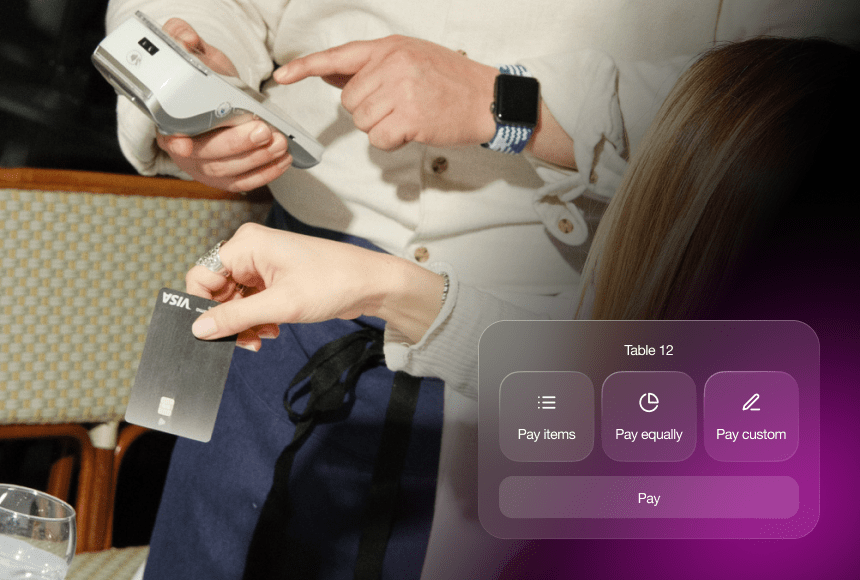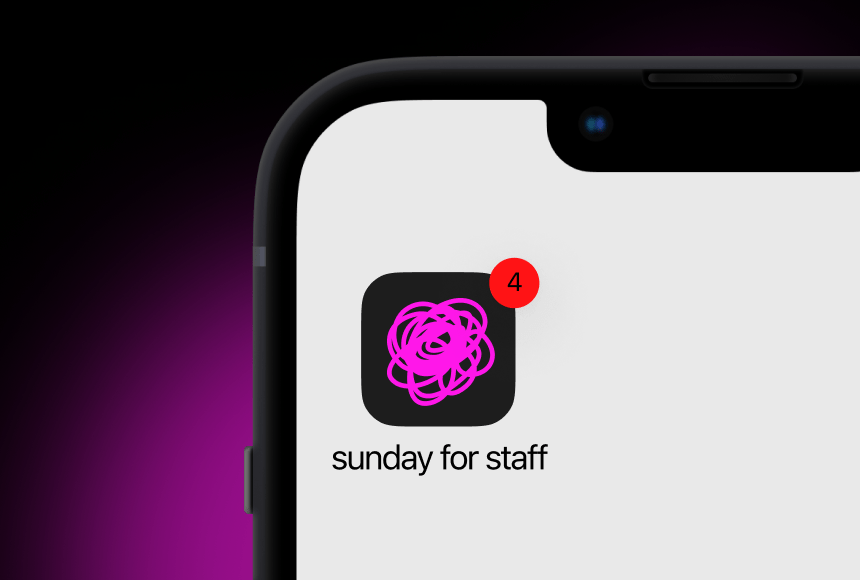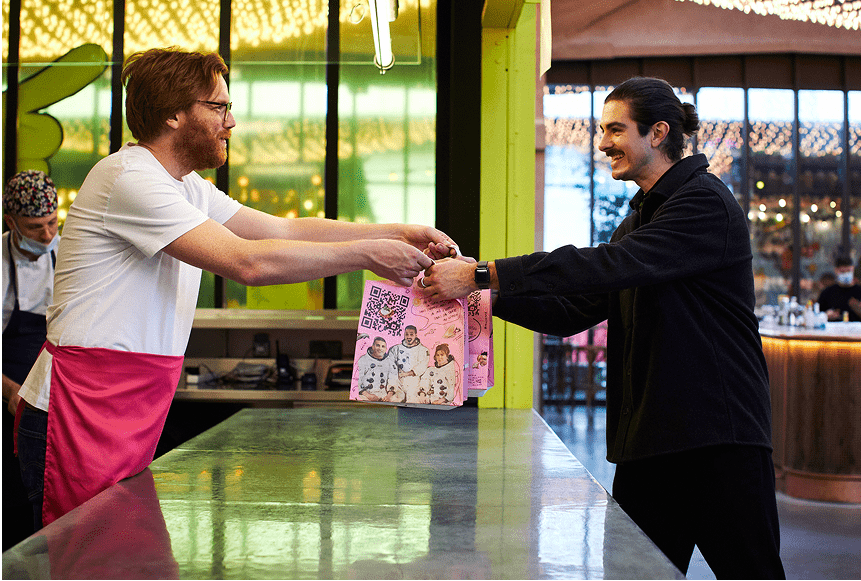
Forecasting Gratuities with AI: A 2025 Perspective for UK Restaurants
Why Tipping Dynamics Matter More Than Ever
Picture your restaurant on a bustling Friday evening in 2025. Every table is filled, your servers are moving with clockwork efficiency, and customers are regularly scanning quick-response codes to settle their bills. Some pay the conventional way—contactless card or phone—while others engage your cutting-edge apps and digital platforms. But there’s one crucial element cutting across all the new technology and streamlined operations: tipping.
Gratuities remain a vital part of the hospitality business—especially in the UK, where there is a strong tradition of expressing appreciation to servers through tips. Your staff rely on tips to supplement their income, and your overall guest experience can be greatly boosted by the sense of goodwill that tipping often fosters. Now, we’re seeing artificial intelligence (AI) emerge as a powerful force in predicting how tips are likely to change, day by day, even hour by hour.
As we head deeper into 2025, tipping’s role is evolving, and AI is helping us chart that path. Here, we look at the power of AI-based analytics to forecast gratuity trends, allowing you to adapt ahead of the curve. Let’s explore how these new techniques can benefit your restaurant, boost staff morale, and strengthen your bottom line.
How AI is Shaping Tipping Forecasts
According to recent insights from The Caterer, the UK’s restaurant sector is experiencing a major shift in how customers approach tipping. A big part of this change stems from digitisation: contactless payments, pay-at-table solutions, and centralised data collection. AI systems can now tap into this data in ways that were near-impossible only a few years ago. Through machine learning algorithms, AI programs analyse customer profiles, historical tipping amounts, time-of-day factors, seasonal variations, and even local events to predict future tipping behaviour with remarkable accuracy.
The process is relatively straightforward. First, devices capture your diners’ payment details, including gratuities. Then, aggregated transaction data is funnelled into an AI engine. Over time, the system “learns” patterns—for instance, it might see that on Friday evenings after payday, your tips go up by a certain percentage. Or it may detect that your breakfast crowd typically titps less overall than your weekend brunch set. Equipped with this knowledge, restaurants can plan staffing with greater precision, manage finances more effectively, and even forecast the added revenue from gratuities.
What sets AI-driven tipping projections apart from traditional manual estimates is the depth of insight. While an experienced manager may guess that Valentine’s Day will be busy and staff comprehensively, an AI solution can suggest, for example, that early seatings on Valentine’s Day bring higher individual gratuities, while late seatings bring higher overall transactions but less generous tips per table.
Key Factors Steering Tipping in 2025
It’s not just about the technology. In 2025, several overarching trends are shaping how people choose to tip:
- Sustainability and Ethical Transparency: Patrons increasingly want to see fair policies around gratuities, wages, and treatment of staff. Showing that tips go directly to your team fosters trust and can even inspire more generous tipping.
- Evolving Payment Methods: Contactless cards and mobile apps have made tipping more seamless. Many systems prompt diners with tip recommendations, which can nudge them towards higher gratuities.
- Generational Differences: Younger diners may be comfortable with digital payments and tips, but older generations might prefer adding a tip to the final bill without digital prompts. By segmenting customers, AI can adjust tip suggestions accordingly.
- Regional Variations: Tipping customs can vary widely between London, Manchester, and smaller towns. AI can assess these location-based trends, ensuring your expectations are in line with the local mindset.
- Event-Driven Fluctuations: Weddings, local festivals, or large sporting events can skew tipping patterns significantly. AI can monitor the event calendar and adjust predicted tips for those days or time frames.
Each of these factors is more than a passing fad; they’ve become core to the experience diners expect. While forecasting tipping may previously have felt like pure guesswork, AI now enables restaurants to remain agile in a competitive market.
Putting AI to Work in Your Daily Operations
Here’s how you might use AI insights in practice. Imagine your restaurant is planning for a busy holiday weekend. You look at historical data and notice that last year’s average tip was highest during the Sunday lunch rush. Your AI tools also warn you that a major local event—perhaps a music festival—is planned for Friday night this year, likely leading to bigger Friday footfall and potentially higher tips on Friday dinner than in previous years. This can influence how many servers you schedule, how you stock your bar, and how you organise your kitchen.
If the system forecasts a jump in gratuities, you can consider ways to celebrate that success with your team. For instance, perhaps you offer a small performance bonus if your overall tips exceed a certain threshold. By gamifying the experience for your staff, you boost engagement and encourage top-tier service. After all, positivity often breeds positivity—servers who feel motivated are more likely to foster positive experiences for diners, which, in turn, can translate to more reliable tips.
One of the major advantages of AI is its ability to refine itself continually through machine learning. As more data pours in, predictions get sharper. That’s especially valuable for restaurants where guest demographics shift on different days or times of year. Over months (or even years), you end up with an ever-evolving blueprint of your restaurant’s tipping ecosystem.
Case Study: The Modern British Bistro
Let’s consider a hypothetical example to illustrate how AI-based tipping predictions might look in a mid-range British bistro:
- Location: A cosy spot in Leeds with a mixed clientele—business lunches on weekdays, families on weekends, couples in the evenings.
- AI Findings: Detailed analysis shows that Monday lunches yield fewer tips overall—perhaps due to smaller footfall—but tips are proportionally higher from corporate diners. Fridays see an influx of younger patrons who pay with QR code apps that automatically suggest a 12% tip.
- Actions Taken: The bistro dedicates more experienced staff to Friday evenings, anticipating a busier crowd and higher tip percentages. They also add a small prompt for families on Saturdays, encouraging them to leave a gratuity to support the staff, many of whom are students or part-timers, which resonates with some diners.
- Results: Over six weeks, the bistro sees an 8% overall rise in tips. The staff also appreciate the clarity in scheduling, earning more predictable income. Managers can reinvest the added revenue in small perks, like staff meals or training sessions.
The beauty of adopting AI is that this scenario is not just fantasy. With the right tools, you can replicate these types of outcomes in your own restaurant.
Ethical and Inclusive Considerations
Transparency is key. In the UK, there’s increasing scrutiny on how tips are distributed, and legislation continues to evolve, aiming to protect workers’ rights to receive their fair share. You want to ensure your diners and staff know exactly how tips are handled. AI systems provide a clear data trail, ensuring ethical distribution. When staff trust that the system is fair, morale improves. Likewise, customers can pay with confidence, knowing their gratuity fully benefits your team.
Additionally, be sensitive to different cultural tipping norms. If you receive visitors from abroad—particularly from countries where tipping is less common—you might gently inform them about local traditions. Some AI-driven payment systems even allow you to customise tip prompts based on a guest’s selected language or region, offering a more inclusive approach that respects various cultural perspectives.
The Role of Modern Payment Solutions
Digitalisation has opened the door to frictionless tipping experiences. Whether through contactless card machines or QR-based payment apps, the process of tipping is simpler and more transparent than ever. Platforms like sunday allow guests to pay using a QR code within seconds, select a recommended tip amount (which can be adjusted freely), and even post immediate Google reviews.
These digital solutions not only boost convenience but also encourage tipping by prompting diners at the ideal moment. The difference is subtle yet powerful. By suggesting a tip amount right as the customer finalises payment—rather than relying on the guest to do mental arithmetic or dig for loose change—restaurants naturally see a rise in tips. Many AI-empowered solutions also gather data on each transaction, providing restaurant owners with a real-time snapshot of tip percentages, server performance, and overall guest satisfaction.
When combined with forecasting technology, these modern systems become your crystal ball. As a restaurant owner, you can see at a glance how tipping behaviour is trending this week compared to last week—even whether a specific table is tipping more when served by a particular member of staff. Over time, these analytics can guide training, scheduling, and staff incentives in an ongoing loop of improvement.
Diving Deeper: Key Data Points to Track
While AI excels at crunching vast amounts of data, knowing what metrics matter most can save you time and resources. Below are a few essential data points restaurants typically track:
- Average Tip Percentage: The overall gratuity’s share of each bill.
- Time of Day Patterns: Lunch vs. dinner vs. late-night bar crowd, each might yield different tip rates.
- Day of Week Variances: Weekdays could attract corporate lunches, while weekends see families or partygoers.
- Server Performance: Identifying those who consistently earn above-average tips can reveal best practices for customer engagement.
- Table Turnover Rate: Fast turnarounds might lead to more frequent tips, but not necessarily bigger ones.
By correlating these elements, AI can paint a rich picture of what drives gratuities in your particular setting. Analysing them regularly gives you the power to adapt on the fly.
Beyond Numbers: Creating a Culture of Generosity
Though data and AI are powerful, the best tipping policies also reflect genuine human connection. Guests tip more when they feel valued, heard, and well taken care of. Shoehorning AI into your experience without nurturing real warmth can backfire by making diners feel that they’re part of a big data experiment, rather than cherished patrons.
Balance is everything. In practice, this might mean using AI behind the scenes for operational forecasting, while continuing to train servers on delivering personal, attentive service. A warm greeting, menu recommendations tailored to each patron, and a sense of authenticity can go a long way. Meanwhile, your AI quietly crunches the numbers, ready to help you make staffing or promotional decisions that benefit both your customers and your team.
A View to the Future
As the hospitality landscape grows increasingly digitised, it’s safe to say that AI won’t just predict tipping trends—it will drive entire transformations in how restaurants do business. Imagine a future where your restaurant adjusts prices dynamically based on predicted footfall, or where digital loyalty programs seamlessly integrate with AI forecasts, awarding points or vouchers to high-tipping customers as a gesture of thanks.
We are already seeing glimpses of that future: some restaurants are testing augmented reality menus, others use facial recognition for personalised service, and still others rely on voice-activated ordering. Tips will likely follow suit, becoming increasingly automated, predictive, and integrated into a broader data network.
For those ready to embrace the next generation of technology, the path forward involves staying flexible and open to change. AI will continue to reveal patterns, highlight areas for growth, and help you maintain an edge in the ever-evolving competition for diner loyalty.
Cultivating Success with AI-Driven Insights
By harnessing the power of AI, you can do more than simply understand your restaurant’s tipping patterns—you can shape them. Use the data to schedule staff more effectively, develop targeted promotions, and foster an environment where your team feels empowered to excel.
Make sure to:
- Train Staff: Ensure your team understands tip predictions and sees how AI can support their efforts, rather than replacing them.
- Set Clear Principles: Maintain transparency so diners and employees trust your approach to gratuities and data.
- Stay Flexible: Let the analytics guide you, but remain prepared to pivot when the unexpected happens—such as a sudden shift in the local economy or a new consumer awareness trend.
When done right, you’ll cultivate a sustainable tipping culture that rewards hardworking staff, bolsters diner satisfaction, and contributes to a more consistently profitable model.
Ready to Embrace the AI Revolution?
Predicting tip trends with AI isn’t just a novelty for tech enthusiasts—it’s rapidly becoming a must-have tool for UK restaurant owners looking to stay ahead. The simple act of anticipating which nights will bring higher average tips can revolutionise your planning, from purchasing supplies to scheduling servers. With so many intuitive tools on the market, and with the power of digital payment solutions like sunday at your fingertips, adopting AI-driven insights is not only feasible but also remarkably straightforward.
Now is the time to explore how these systems might fit your unique needs. Start small if necessary, focusing on a single data stream—perhaps weekend sessions or lunch services—and gradually expand from there. Within just a few months, you’ll likely notice measurable gains: happier staff, satisfied diners, and a healthier bottom line.
As technology advances, restaurants willing to adapt will be best positioned for success. If you’re prepared to let AI handle the heavy lifting—and keep the personal, human touch front and centre—you might just find 2025 to be your most prosperous year yet. The future of tipping is bright, and with predictive AI, you can be the one to light the way.
Find out more today
Drop us your details below and we’ll reach out within the next 24
More tips means a better service.
3X more tips mean 3X better guest-experience, and 3X better staff-retention.




